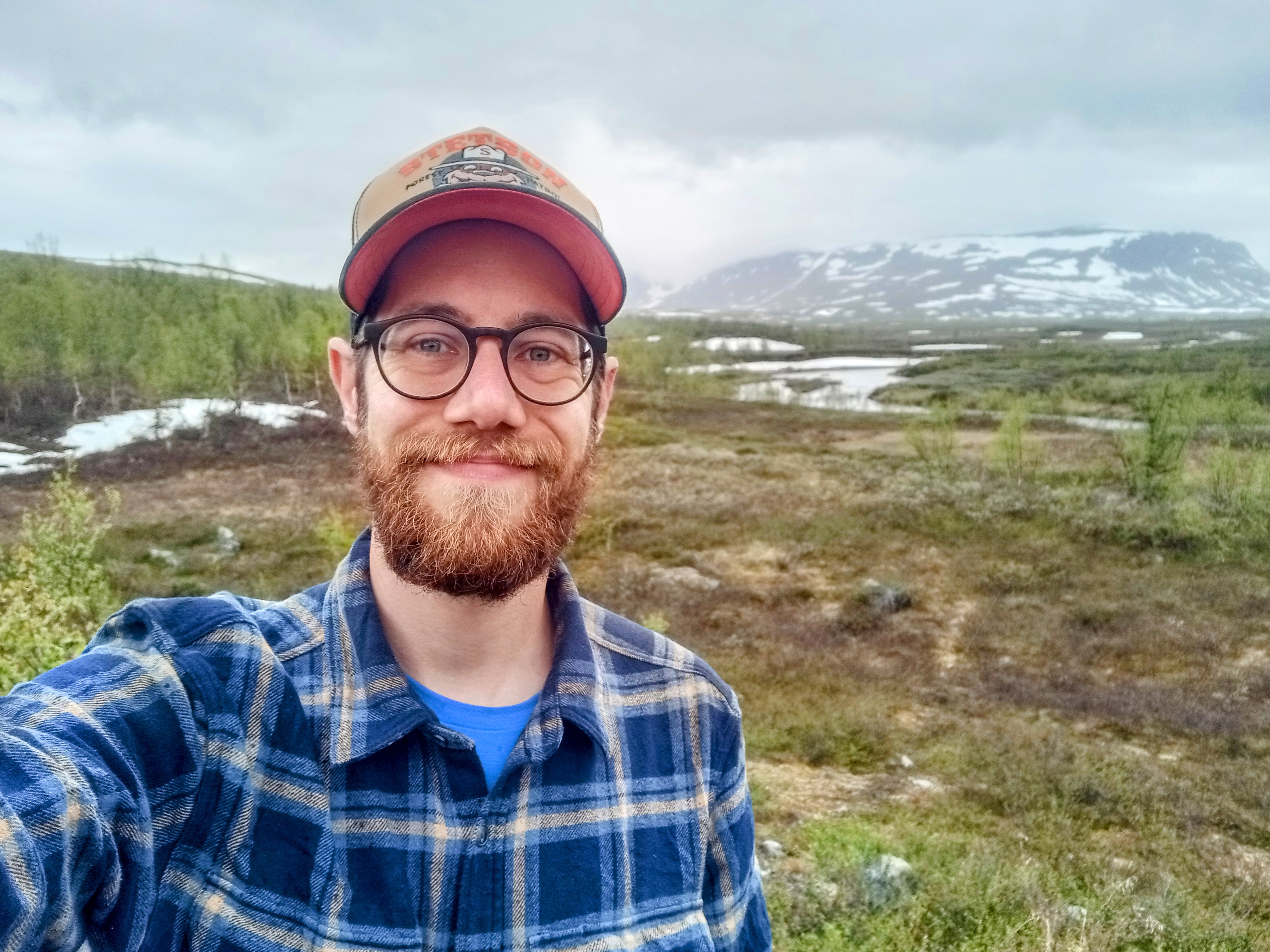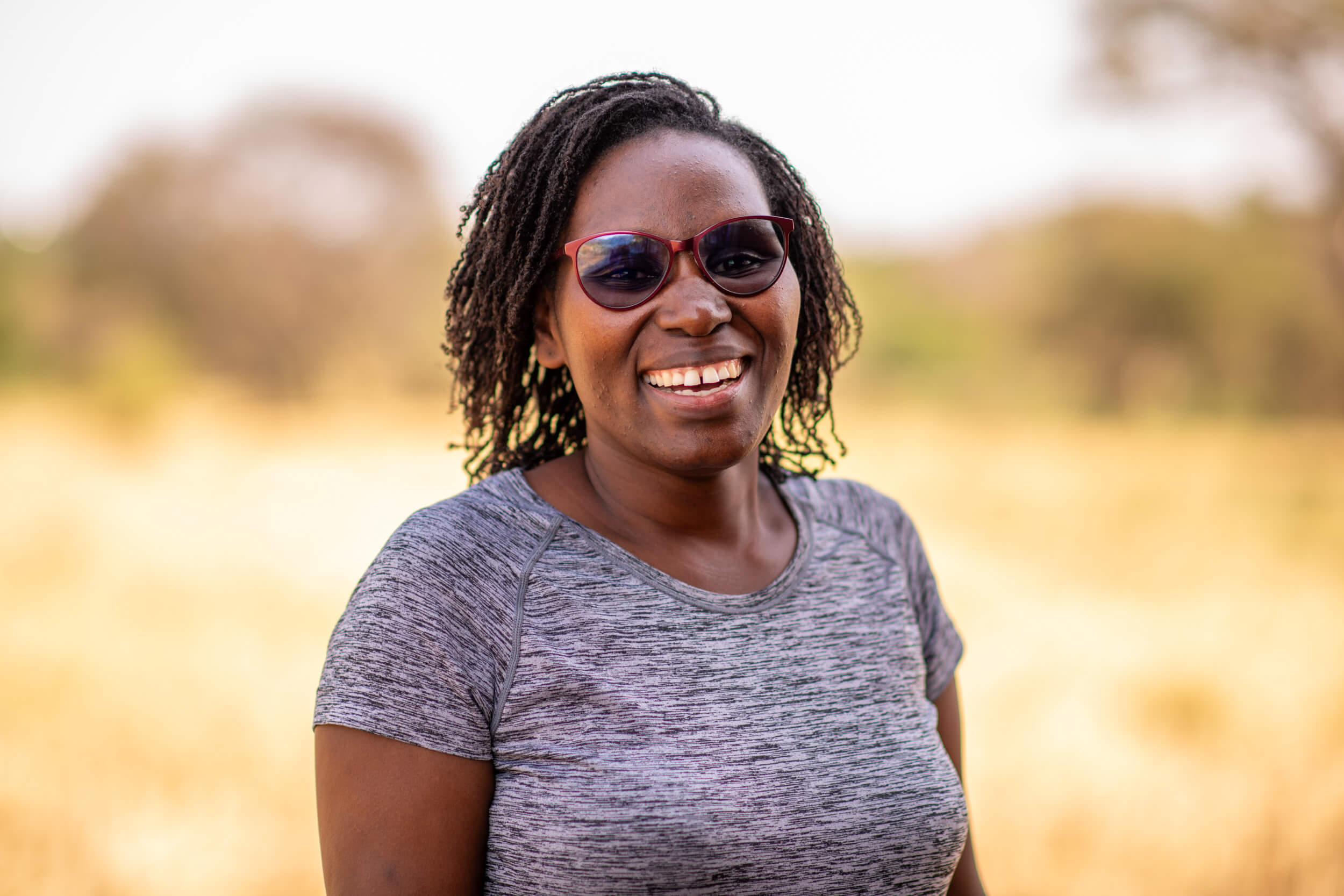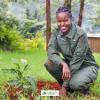With new technologies revolutionizing data collection, wildlife researchers are becoming increasingly able to collect data at much higher volumes than ever before. Now we are facing the challenges of putting this information to use, bringing the science of big data into the conservation arena. With the help of machine learning tools, this area holds immense potential for conservation practices. The applications range from online trafficking alerts to species-specific early warning systems to efficient movement and biodiversity monitoring and beyond.
However, the process of building effective machine learning tools depends upon large amounts of standardized training data, and conservationists currently lack an established system for standardization. How to best develop such a system and incentivize data sharing are questions at the forefront of this work. There are currently multiple AI-based conservation initiatives, including Wildlife Insights and WildBook, that are pioneering applications on this front.
This group is the perfect place to ask all your AI-related questions, no matter your skill level or previous familiarity! You'll find resources, meet other members with similar questions and experts who can answer them, and engage in exciting collaborative opportunities together.
Just getting started with AI in conservation? Check out our introduction tutorial, How Do I Train My First Machine Learning Model? with Daniel Situnayake, and our Virtual Meetup on Big Data. If you're coming from the more technical side of AI/ML, Sara Beery runs an AI for Conservation slack channel that might be of interest. Message her for an invite.
Header Image: Dr Claire Burke / @CBurkeSci

Explore the Basics: AI
Understanding the possibilities for incorporating new technology into your work can feel overwhelming. With so many tools available, so many resources to keep up with, and so many innovative projects happening around the world and in our community, it's easy to lose sight of how and why these new technologies matter, and how they can be practically applied to your projects.
Machine learning has huge potential in conservation tech, and its applications are growing every day! But the tradeoff of that potential is a big learning curve - or so it seems to those starting out with this powerful tool!
To help you explore the potential of AI (and prepare for some of our upcoming AI-themed events!), we've compiled simple, key resources, conversations, and videos to highlight the possibilities:
Three Resources for Beginners:
- Everything I know about Machine Learning and Camera Traps, Dan Morris | Resource library, camera traps, machine learning
- Using Computer Vision to Protect Endangered Species, Kasim Rafiq | Machine learning, data analysis, big cats
- Resource: WildID | WildID
Three Forum Threads for Beginners:
- I made an open-source tool to help you sort camera trap images | Petar Gyurov, Camera Traps
- Batch / Automated Cloud Processing | Chris Nicolas, Acoustic Monitoring
- Looking for help with camera trapping for Jaguars: Software for species ID and database building | Carmina Gutierrez, AI for Conservation
Three Tutorials for Beginners:
- How do I get started using machine learning for my camera traps? | Sara Beery, Tech Tutors
- How do I train my first machine learning model? | Daniel Situnayake, Tech Tutors
- Big Data in Conservation | Dave Thau, Dan Morris, Sarah Davidson, Virtual Meetups
Want to know more about AI, or have your specific machine learning questions answered by experts in the WILDLABS community? Make sure you join the conversation in our AI for Conservation group!
- @gabyavm97
- | She/her
Gabriela A. Valencia-Macias, B.Sc. (Universidad Veracruzana), is achieving a master's degree in science at the Ecology Institute (INECOL A.C). She is Colombian-Mexican and has focused her studies on the conservation and biodiversity of amphibians.
- 0 Resources
- 0 Discussions
- 2 Groups
- @HRees
- | Him/His
WILDLABS & Fauna & Flora
WILDLABS - Programme Development Manager, keen interest in bats, hyenas and tech!





- 13 Resources
- 3 Discussions
- 6 Groups

- 0 Resources
- 30 Discussions
- 4 Groups
Over 35 years of experience in biodiversity conservation worldwide, largely focused on forests, rewilding and conservation technology. I run my own business assisting nonprofits and agencies in the conservation community



- 5 Resources
- 62 Discussions
- 12 Groups
- @julia05
- | she/her
- 0 Resources
- 0 Discussions
- 3 Groups
- @jasminedaly
- | she/her/hers
Principal Consultant & Founder of Daly Analytics which helps nonprofits and purpose-driven teams make sense of their data.
- 0 Resources
- 0 Discussions
- 6 Groups
- @roxirisa
- | roxi
Biologist I consider myself a data scientist with a passion for nature and with an extensive experience in species distribution modeling, handling large data sets from different sources such as gbif, eBird, xeno-canto, Worldclim, Terraclimate, ocean color e NASA among others. But
- 0 Resources
- 0 Discussions
- 9 Groups
- @DeepakSathyanarayan
- | he/his
Deepak is an experienced professional who has served in multiple leadership roles in technology, science, product development, and engineering programs. He has proven expertise in shaping and executing technology strategies across defense, space, health, and environment sectors.

- 0 Resources
- 5 Discussions
- 7 Groups
- @a.zubiria
- | she/her
- 0 Resources
- 2 Discussions
- 11 Groups
Chief Marketing Officer 🌎 Building Transparency through Data & Storytelling

- 2 Resources
- 3 Discussions
- 8 Groups
- 0 Resources
- 0 Discussions
- 14 Groups

- 0 Resources
- 0 Discussions
- 3 Groups
Article
SPARROW: Solar-Powered Acoustics and Remote Recording Observation Watch
18 December 2024
Comments on Reynolds, S.A et all (2024) 'The potential for AI to revolutionize conservation: a horizon scan'. A very interesting read, perhaps more for the discussion on negative effects of AI and consequences for the...
18 December 2024
The Department of Wildlife, Fish, and Environmental Studies (WFE), SLU, Umeå, is looking for a postdoc with strong interests in wildlife conservation technology. She/he will work within Big Picture, a European project...
18 December 2024
Fully funded 2 year position within a Biodiversa+ funded project
16 December 2024
Develop state-of-the-art interactive ML-based tools for biodiverstiy conservation and related applications
11 December 2024
Join the San Diego Zoo Wildlife Alliance as a Postdoctoral Fellow! Lead groundbreaking bioacoustic and ML research to conserve burrowing owls in SoCal.
26 November 2024
The paper looks at technology advances for vegetation cover changes monitoring. For example, computer vision methods to infer 3D parameters via contextual learning from optical images.
25 November 2024
Interesting webinar on the use of advanced technologies(e.g. Artificial Intelligence, cloud computing, drones, camera traps and satellites) for biodiversity monitoring in the Amazon. Also available in Spanish.
25 November 2024
Careers
We are hiring a computer vision developer at the University of Florida!
20 November 2024
Dive into meaningful play with FathomVerse!
20 November 2024
1 year research role working on the FrogID citizen science project
13 November 2024
Are you stuck on an AI or ML challenge in your conservation work? Apply now for the chance to receive tailored expert advice from data scientists! The deadline for applications is Monday 9 December 2024.
13 November 2024
June 2025
event
July 2025
October 2025
event
event
January 2025
event
event
73 Products
Recently updated products
16 Products
Recently updated products
| Description | Activity | Replies | Groups | Updated |
|---|---|---|---|---|
| We are working on the identification of the threats along the flyway of the Egyptian vulture, endangered vutlure species migrating from... |
|
AI for Conservation | 8 years 11 months ago | |
| Hi Jason, Thanks for sharing this demo, it's interesting to see the fluke id process in action. Is this part of the flukebook project? How do you see the project... |
|
AI for Conservation | 8 years 11 months ago | |
| Hi folks! The team at Skytruth (responsible for Global Ocean Watch) are looking for a machine learning developer. It might be of... |
|
AI for Conservation | 9 years 3 months ago | |
| Hi, I am jason Holmberg from WildMe.org. I am one of the developers of Wildbook (wildbook.org), an open source data management platform for wildlife research. I'm... |
|
AI for Conservation | 9 years 4 months ago | |
| I'd like to suggest our open source package Wildbook (http://www.wildbook.org) as a base data management platfor for this. I agree with the above that there are a number of... |
|
AI for Conservation | 9 years 4 months ago | |
| Over the past year the open data GDELT Project (http://gdeltproject.org/), which monitors local news coverage worldwide in... |
|
AI for Conservation | 9 years 4 months ago |
GEO COP16 Pavillion
Wildlife data from autonomous vehicles
16 October 2024 7:57pm
Deepfaune v1.2!
4 October 2024 4:12pm
9 October 2024 12:01am
Edit: SOLVED Thanks!
Thank you so much for this awesome work! I was trying to load the v2 model the same way as in classifTools.py:
model = timm.create_model(backbone="vit_large_patch14_dinov2.lvd142m", pretrained=False, num_classes=len(class_names))
ckpt = torch.load(weight_path='deepfaune-vit_large_patch14_dinov2.lvd142m.v2.pt', map_location=device)
state_dict = ckpt['state_dict']
new_state_dict = {k.replace('base_model.', ''): v for k, v in state_dict.items()}
model.load_state_dict(new_state_dict)
but it fails with this error:
Error(s) in loading state_dict for VisionTransformer:
size mismatch for head.weight: copying a param with shape torch.Size([30, 1024]) from checkpoint, the shape in current model is torch.Size([26, 1024]).
size mismatch for head.bias: copying a param with shape torch.Size([30]) from checkpoint, the shape in current model is torch.Size([26]).
Are you using a different backbone for v2? I tried BACKBONE= '"vit_large_patch14_dinov2.lvd142m.v2" but that also doesn't work.
15 October 2024 12:53pm
For the record now that this is here:
This error typically occurs when the wrong number of classes is given to timm.create_model.
You should try to specify num_classes=30 manually (for this v1.2, number can change in future versions as we add new species).
Also, for issues please do reach out (as Jennifer did) by email, we will be much more responsive. More general questions/discussions can be asked here, I will reply asap.
New project: Using bioacoustic monitoring to assess effects of rubber agroforestry systems on wildlife in Thailand
9 October 2024 7:42pm
MS and PhD Opportunities in Ocean Engineering and Oceanography
6 October 2024 9:44am
African Research Fellowship: 2024/2025
4 October 2024 10:24pm
ESA Training on EO for Forestry
4 October 2024 10:14pm
Support no-code custom AI for camera trap images by filling out this survey
2 October 2024 10:43pm
Building a biodiversity startup focused on getting landowners to use native plants
23 September 2024 3:37pm
30 September 2024 10:06pm
This sounds a similar tool you may want to check out - Ecodash.ai
1 October 2024 2:40pm
Thanks! Do you happen to know how to get in touch with the folks leading this initiative?
1 October 2024 2:47pm
I'm not affiliated, I just happened across it... not sure who is actually leading it.
Calling for applications for Round 3 of our Satellites for Biodiversity Award Grant
30 September 2024 5:22pm
AI and its environmental issues
26 September 2024 4:11pm
26 September 2024 6:55pm
Great and difficult question Lisa! I think, yes, we are adding to the problem. We have been already when ML was introduced as a solution to big data problems, and perhaps we have been long before that with things that I am not aware of. My guess would be that the conservation sector is too small to have a big influence, but probably that can be guessed for many sectors. So, I don't believe we are off the hook.
Today at the acoustics webinar we had yet another discussion that ended up with how much we are trying to achieve with how few means. AI and ML allow us ( or hopefully will in the nearby future ) to do a lot of data and analytical work - mostly recognizing animals and their behaviour in sensor data - that without these means would be unthinkable within the resources that are available.
These are just guesses and believes. I would like to know how the damage weighs up against what we can do with it for nature's benefit, but I would not know where to start.
The argument seems similar to that related to questions like 'should we step in airplanes for conservation and climate conferences?', 'Driving cars around in the field?', and even 'use all those electronics and batteries?'
Conservation tech in Human Wildlife Conflict
12 September 2024 1:50pm
23 September 2024 10:34pm
Thank you so much Brett.
I am not familiar with some of these tools such as critter alarm but I did search a little about it and it looks very interesting, I will look more on it's effectiveness on Elephants and Hyenas.
25 September 2024 4:51am
The beehive method is neat! Will have to read up on that.
25 September 2024 4:56am
Odor based methods would be interesting. Provided they didn't need to be replenished too often.
We find varied stimulus prevents habituation.
EarthRanger and Skylight for improving protected and conserved area effectiveness
23 September 2024 1:30pm
AI & Illegal Wildlife Trade
9 September 2024 9:00am
20 September 2024 5:08pm
Hi Ahmed - I'm involved in a couple different initiatives that are leveraging AI/ML to assist in monitoring and detecting potentially suspicious and illegal trade. Here are some papers that we've already published -- and we have several more in the works/under review currently. I can post them here in this thread once published:
●Truszkowski, J. M., R. Maor, R. Bin Yousuf, S. Biswas, C. Chater, P. Gasson, S. McQueen, M. Norman, J. Saunders, J. Simeone, N. Ramakrishnan, A. Antonelli, and V. Deklerck. pre-print, forthcoming. A probabilistic approach to estimating timber harvest location. https://ecoevorxiv.org/repository/view/5059/
● Datta, D., N. Self, J. Simeone, A. Meadows, W. Outhwaite, N. Elmqvist, and N. Ramakrishnan. 2023. TimberSleuth: Visual Anomaly Detection with Human Feedback for Mitigating the Illegal Timber Trade. Information Visualization. https://doi.org/10.1177/14738716231157081
● Datta, D., S. Muthiah, J. Simeone, and A. Meadows. 2021. Scrutinizing Shipment Records to Thwart Illegal Timber Trade. Outlier Detection and Description Workshop, ACM SIGKDD 2021. https://oddworkshop.github.io/assets/papers/7.pdf
● Datta, D., M.R. Islam, N. Self, A. Meadows, J. Simeone, W. Outhwaite, C. Hin Keong, A. Smith, L. Walker, and N. Ramakrishnan. 2020. Detecting Suspicious Timber Trades. Proceedings from the Thirty-Second Conference on Innovative Applications of Artificial Intelligence (IAAI-20). NY, NY. https://doi.org/10.1609/aaai.v34i08.7032
● Mortier, Thomas, Jakub Truszkowski, Marigold Norman, Markus Boner, Bogdan Buliga, Caspar Chater, Henry Jennings, et al. “A Framework for Tracing Timber Following the Ukraine Invasion.” Nature Plants 10, no. 3 (March 2024): 390–401. https://doi.org/10.1038/s41477-024-01648-5.
(The researchers from World Forest ID who lead the above paper - together with Virginia Tech Computer Science, UW Remote Sensing and Isotope labs, and me are all now on a NSF grant to further this work together).
Also, here are a couple of other recent relevant papers by other teams of researchers:
● Gore, Meredith L., Emily Griffin, Bistra Dilkina, Aaron Ferber, Stanley E. Griffis, Burcu B. Keskin, and John Macdonald. “Advancing Interdisciplinary Science for Disrupting Wildlife Trafficking Networks.” Proceedings of the National Academy of Sciences 120, no. 10 (March 7, 2023): e2208268120. https://doi.org/10.1073/pnas.2208268120.
●Wing, Kate, and Benjamin Woodward. “Advancing Artificial Intelligence in Fisheries Requires Novel Cross-Sector Collaborations.” ICES Journal of Marine Science, August 28, 2024, fsae118. https://doi.org/10.1093/icesjms/fsae118.
21 September 2024 7:42am
Thanks Alex.
21 September 2024 7:51am
Thank you John.
🌍🎶 **Inspiring Moments at the African Bioacoustics Community Conference!** 🎶🌍
18 September 2024 5:37pm
18 September 2024 5:40pm
26 September 2024 1:08pm
New paper and datasets on Raspberry Pi-based AI-powered camera traps for wildlife monitoring
13 September 2024 12:54pm
Camera trap function in heat waves
29 August 2024 9:59pm
10 September 2024 3:35am
Hi Karen.
It's actually possible that it might not necessarily be the high heat that is causing problems with the batteries. Lithium should be quite durable for the temperatures experienced inside the enclosure. Instead, the problem could likely be condensation. In an enclosure, if the sun shines directly on a sealed enclosure, the enclosure can internally heat up, evaporating any moisture in it and raising the dew point. If the external temperature then cools, the internal enclosure air that comes into contact with the cooler walls of the enclosure can form condensation droplets. If you've ever left a glass jar in the sun, you'd see this phenomenon.
The problem is that if any condensation gets on the internal camera circuit board, its possible that it can potentially conduct enough current to increase the discharge rate of the batteries or in some cases, cause the whole device to go down. We've seen this happen in some of the field devices we deploy and have since protected critical circuitry against condensation.
To avoid this situation, I'd recommend trying to keep your camera traps out of direct sunlight and putting a lot of dessicant inside before sealing them. Not sure if this solves your problem, but hopefully it might help.
10 September 2024 11:04pm
This is good advice. Most lithium batteries should operate fine within a -10c to 60c temp range.
Personally I've only ever encountered issues from cold weather conditions.
Non rechargeable batteries tend to have even wider operating temperatures.
LFP Rechargeable batteries also have better temp ranges.
Word of caution regarding dessicant packs is make sure they aren't touching PCBs. We've seen cases where the packs absorbed moisture but then became damp enough to short out components.
Could also be a bad batch of batteries. Make sure to pre charge them if using rechargeable batteries and measure them while they are connected to a load. Bad batteries will often measure fine voltage wise when not connected to anything but once a load is introduced their voltages drop significantly more than good batteries.
11 September 2024 4:55am
Hi Karen,
Yeah the discharge curves of lithium cells tend to be very stable for a long time and then drop sharply at the end. Akiba and Brett's advice below re: condensation prevention is another great recommendation and could well be the root of your problem. Let us know if you have any questions or if you do any testing etc., as this sort of information is gold!
All the best,
Rob
Global model for Livestock detection in airborne imagery - Data, Applications, and Needs
12 August 2024 8:19pm
4 September 2024 6:15pm
It looks like the website has not been updated since 2022 and indeed you need to register. If you go under 'Manage Account' you may be able to register. I tried to register but I got an error saying 'Login failed! Account is not active'. I got an email saying "Your account must be approved before being activated. Once your account has been approved, you will be notified." So I am waiting for the account to be approved...
I'll keep you posted
6 September 2024 12:46pm
Hi Ben!
Great initiative!
A review of deep learning techniques for detecting animals in aerial and satellite images
https://www.sciencedirect.com/science/article/pii/S1569843224000864#b0475
lists a number of data sets (incl. one published by you it seems...)
Also, @dmorris keeps a list of Terrestrial wild animal images (aerial/drone):
https://lila.science/otherdatasets#images-terrestrial-animals-drone
List of other conservation data sets - LILA BC
LILA BC - List of other conservation-related data sets
which seem like it might be useful for you.
9 September 2024 8:10pm
Hi @benweinstein !
- Surely a general detector might be very useful for detecting objects in aerial imagery! Maybe something similar to what MegaDetector does in camera trap images, generally detecting person, animal, and vehicle (and thus also empty photos). This could greatly improve semi-automated procedures. It could also serve as a first step for context-specific detectors or classifiers to be developed on top of this general one.
- There is also the WAID dataset that is readily available. Our research group could also provide images containing cows, sheep, and deer from South America.
Best
Product & Community Manager #Job
2 September 2024 11:07pm
Spatiotemporal species distribution modeling
6 August 2024 12:39am
6 August 2024 4:09pm
Hey,
You're correct, traditionally species distribution models are spatial only, but here are a few ideas for how to incorporate time into your modelling:
- Categorise the time dimension (E.G. Month/Season/Year, wet season/dry season etc) and use it as an input variable.
- Incorporate phenological data (flowering time, migration period etc) into the input variables.
- Use time series data and use an appropriate model to take this into account such as LSTM.
A few things to bear in mind:
- We need the time of the X data to match that of the y data. This constrains the data that we can use. I'd recommend using Google Earth Engine to get the X data as you can query it for specific date ranges and they have a wide range of relevant datasets.
- Whichever variables you use as input also have to be used for prediction.
- Any categorised temporal variables you choose have to be applicable to all species being modelled.
I hope this helps!
-Will
31 August 2024 5:22pm
Thank you!!
WILDLABS Virtual Meetup: Bioacoustics Policy Integration and Scientific Impact
22 August 2024 7:57pm
WILDLABS Virtual Meetup: Bioacoustics Data Analysis and AI
22 August 2024 7:22pm
WILDLABS Virtual Meetups Season Five: Listen to the Future
22 August 2024 5:59pm
WILDLABS Virtual Meetup: Bioacoustics Data Networks and Platforms
22 August 2024 5:45pm
WILDLABS Virtual Meetup: Bioacoustics Hardware Innovation
22 August 2024 5:25pm
Catch up with The Variety Hour: August 2024
20 August 2024 12:58pm



















































17 October 2024 5:59am
Comma.ai would be your best bet. Not sure if it's officially open source but was started by a noteable hacker with an open source ethos. Could try reaching out to them.